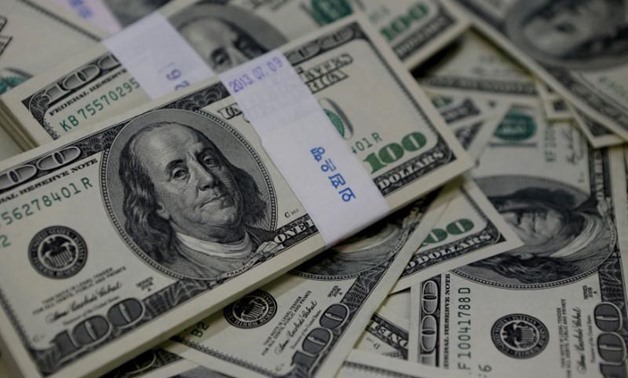
U.S. one-hundred dollar bills are seen in this picture illustration, August 2, 2013 - REUTERS/Kim Hong-Ji/Illustration
SINGAPORE - 30 October 2018: The dollar held most of its overnight gains against a basket of its key rivals, with Tuesday’s trade supported by a safe haven bid as fresh worries over Sino-U.S. frictions and fears of a slowdown in global economic growth sapped investors’ confidence.
Investors took cover in the greenback after Bloomberg reported that Washington is preparing to announce tariffs on all remaining Chinese imports by early December if talks next month between U.S. President Donald Trump and Chinese President Xi Jinping fail to ease the trade war.
Trump and his Chinese counterpart are due to meet on the sidelines of the Group of 20 leaders summit in Argentina at the end of November.
In Asia, stocks got off to a tentative start and managed to steady as policy makers in China announced further steps to restore confidence in local markets that have seen steep declines recently. That boosted Chinese equities and tempered some of the gloom around Beijing’s bitter trade fight with Washington.
The Chinese yuan currency, was hovering at 10-year lows in onshore trade, giving up 0.1 percent to 6.9696 per dollar, stirring speculation over whether the central bank will tolerate a slide beyond the key level of 7 per dollar.
Policy insiders told Reuters on Friday that China is likely to use its vast currency reserves to stop any precipitous fall through the psychologically important 7 level as it could risk triggering speculation and heavy capital outflows.
The Japanese yen, also a safe haven currency sought during times of market stress, extended its losses versus the dollar after losing ground overnight, partly as Japanese investors have been net buyers of offshore equities in the current month.
Yen traders are also focused on the central bank’s monetary policy meeting due Wednesday.
“We expect the Bank of Japan to leave policy on hold at its 31 October meeting. The policy board will likely revise down slightly its macro forecasts; continued downside risks to growth and inflation mean rate hikes are a long ways off,” said analysts at Bank of America Merrill Lynch in a research note.
The dollar index, a gauge of the currency’s strength against six major peers, traded at 96.66, up 0.1 percent on Tuesday. It hit a 2018 high of 96.86 on Aug. 15.
“The U.S. dollar is benefiting from its safe haven status due to the steep fall in equity prices as trade war fears escalate,” said Ray Attrill, head of currency strategy at NAB.
The Australian dollar, often viewed as a barometer of global risk appetite, put on 0.43 percent at $0.7085 on Tuesday, buoyed by the rally in Chinese equities.
China is Australia’s largest trading partner, and economic news from the Asian giant tends to influence Australian asset markets.
Elsewhere, the euro. remained under the gun due to continued political uncertainty. The single currency managed to hold steady against the dollar at $1.1377, having hit a 10-week low of $1.1332 on Monday on news that German Chancellor Angela Merkel would not seek re-election as head of her Christian Democrats (CDU) party.
The euro has also been weighed by the ongoing standoff between Brussels and Rome over Italy’s free spending budget that would breach the European Union’s fiscal rules.
“The main risk to the euro is if the coalition in Germany collapses before 2019. That coupled with negative news flow out of Italy could lead to the perfect storm,” said Attrill.

Comments
Leave a Comment